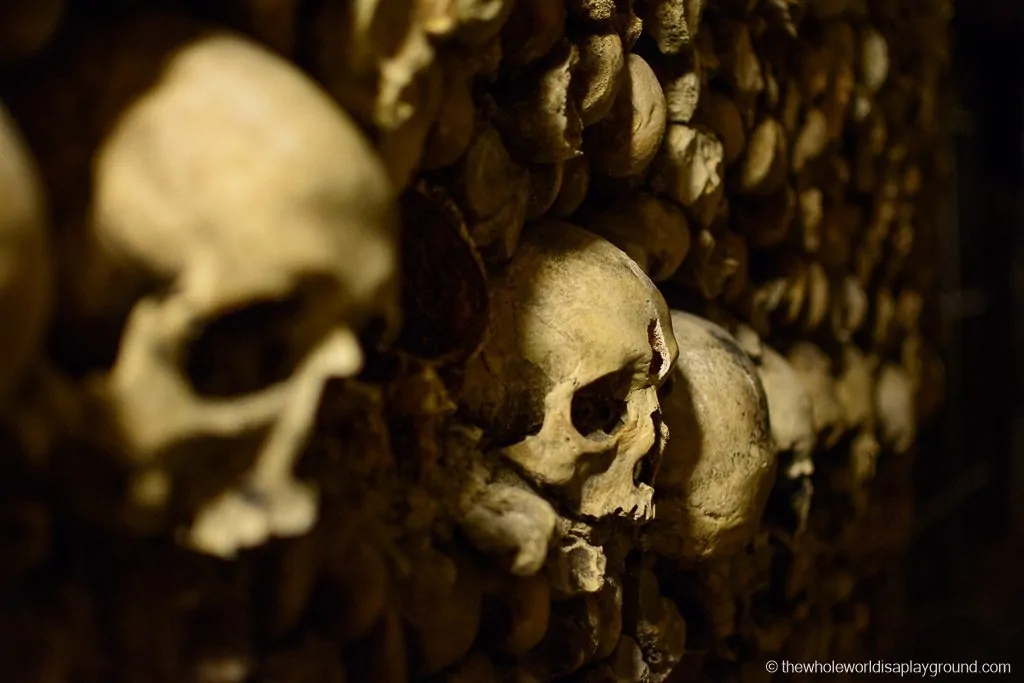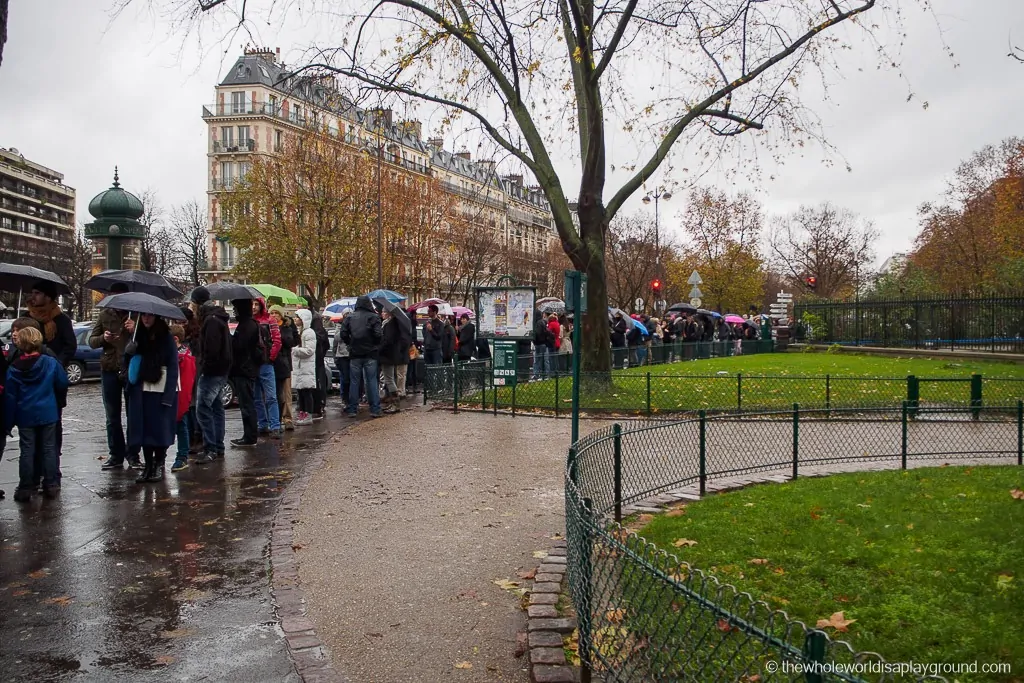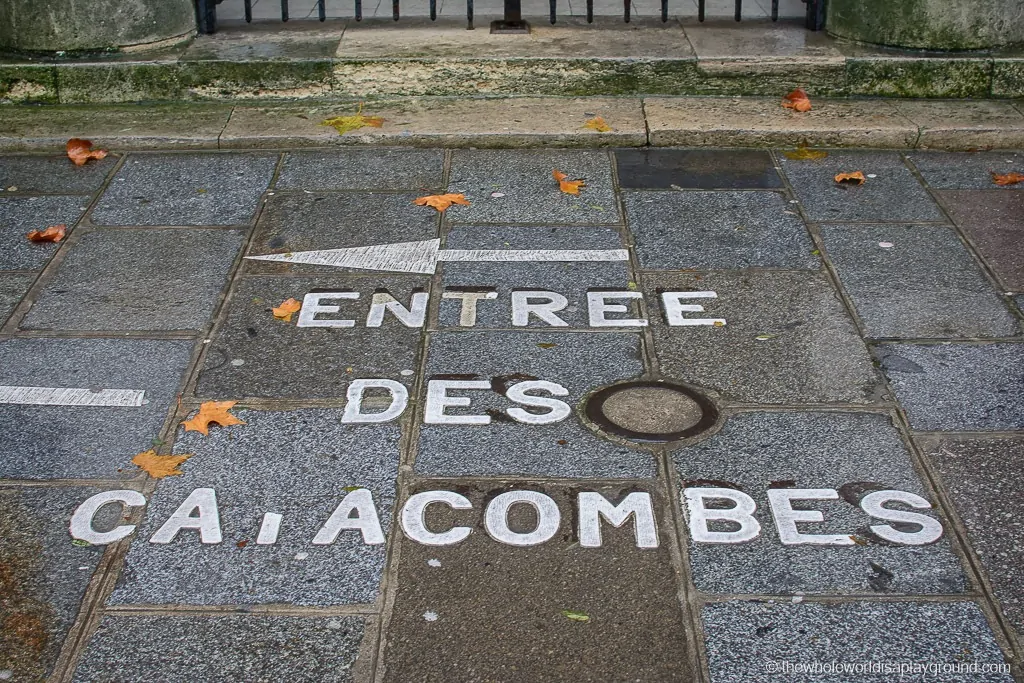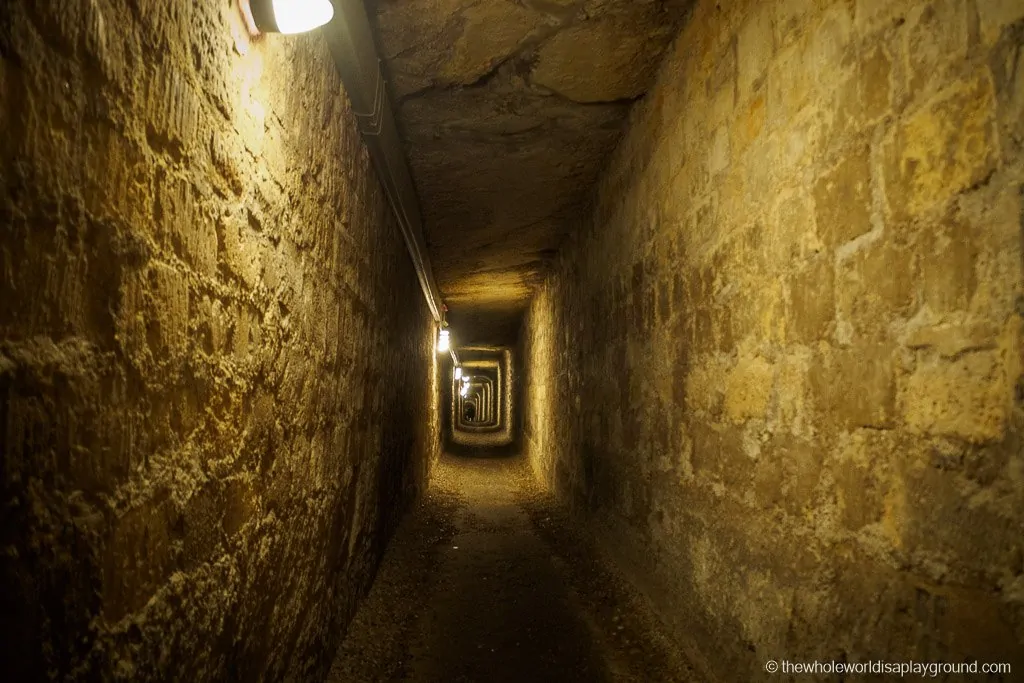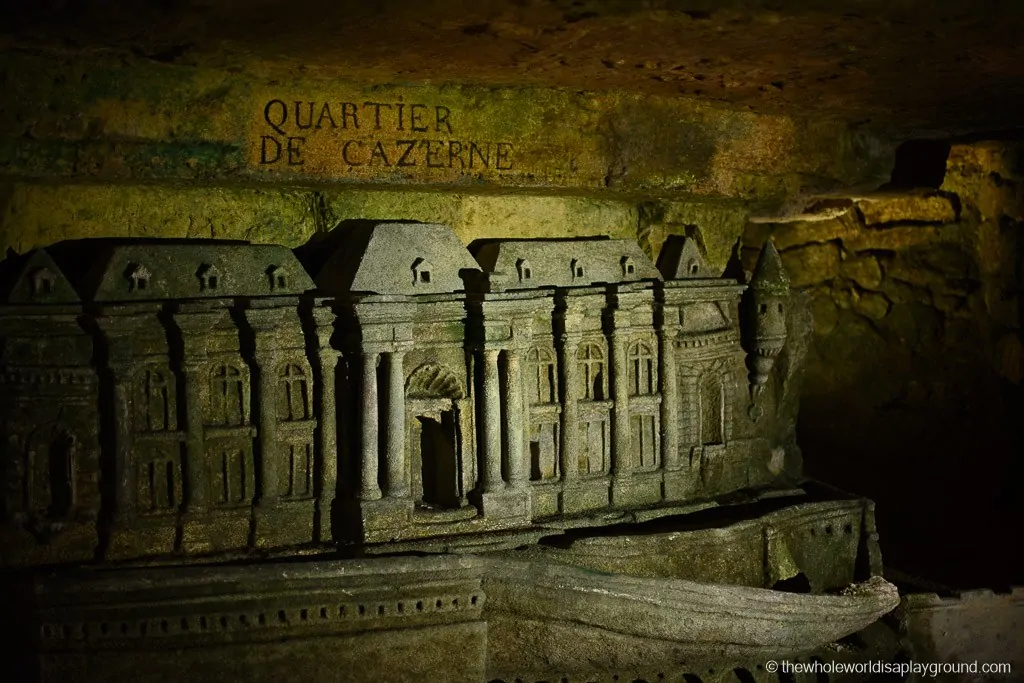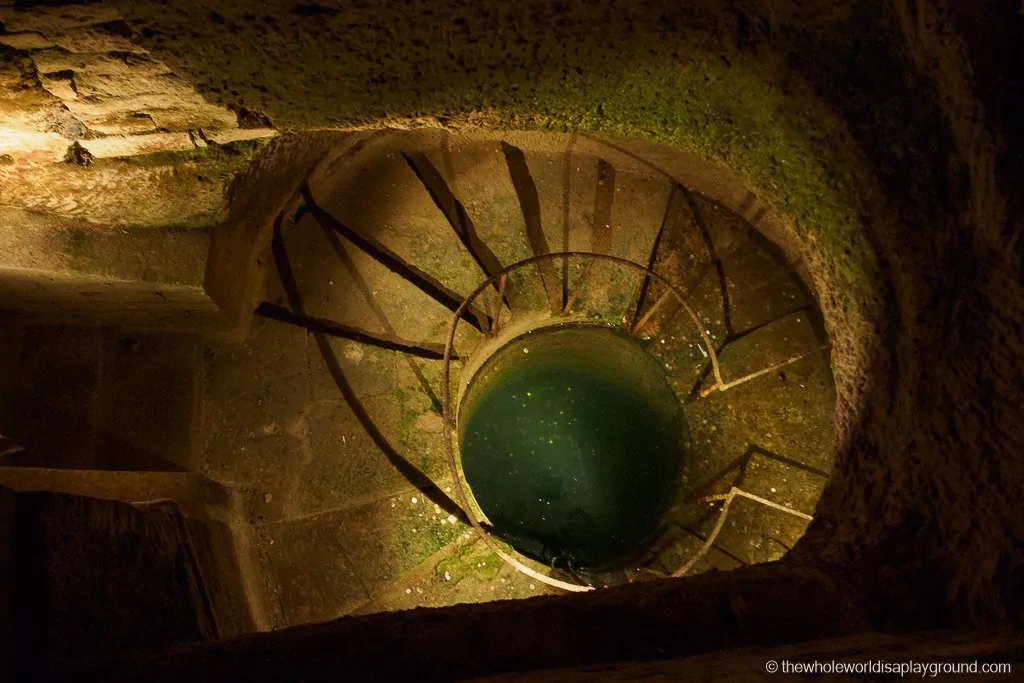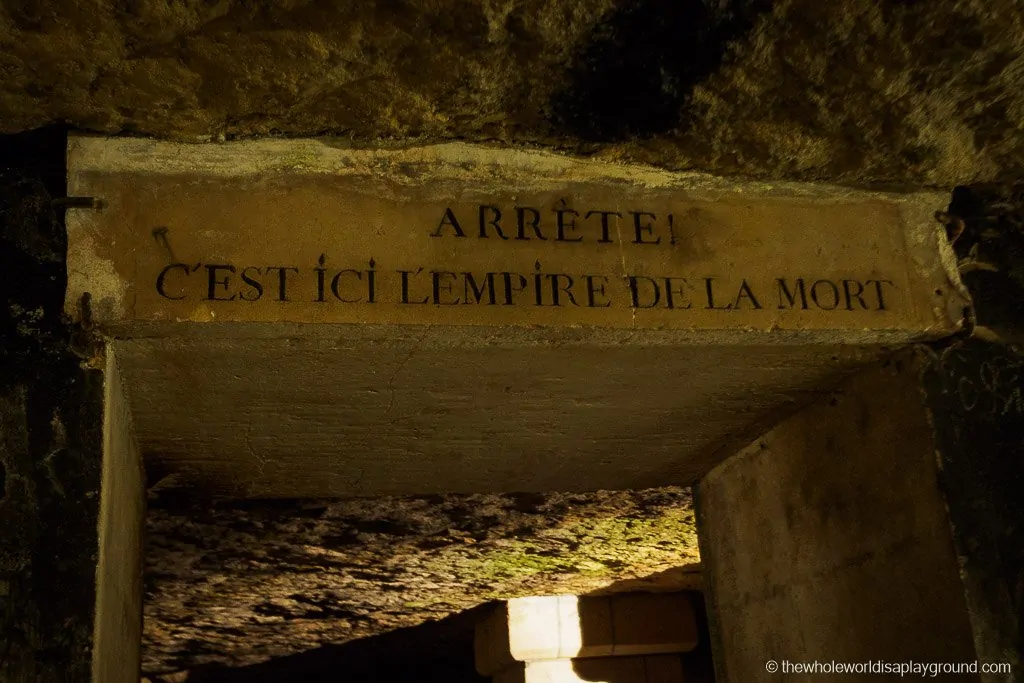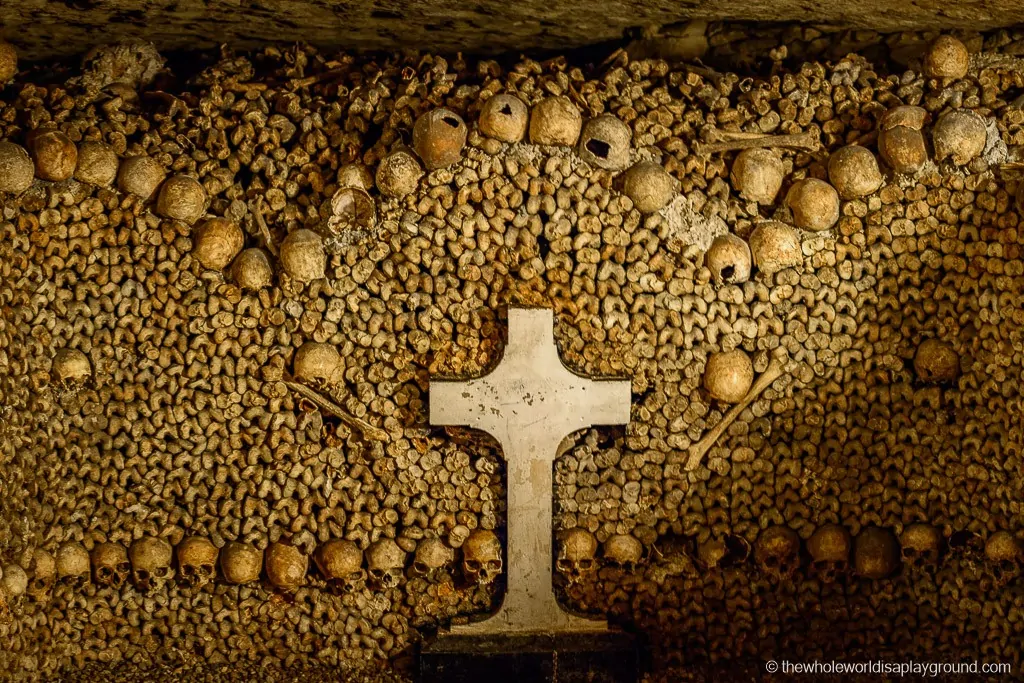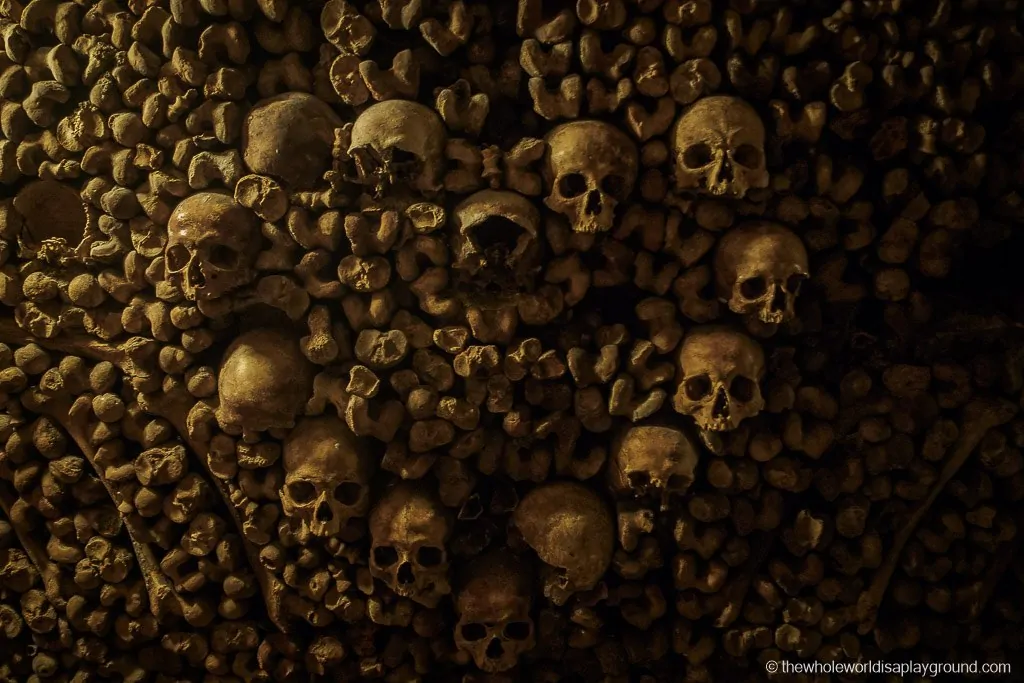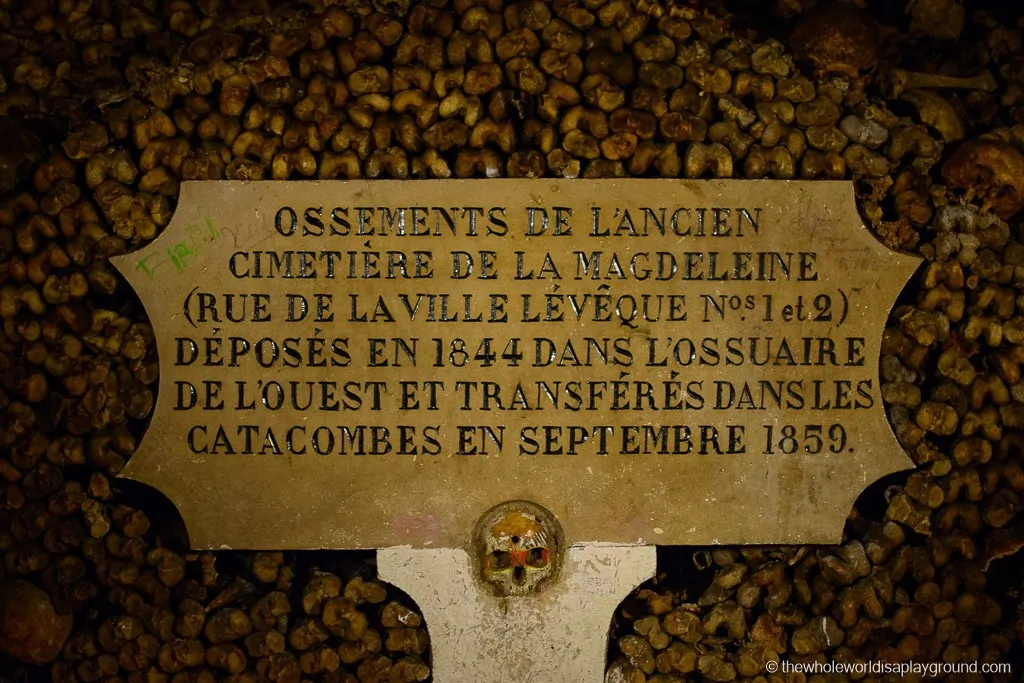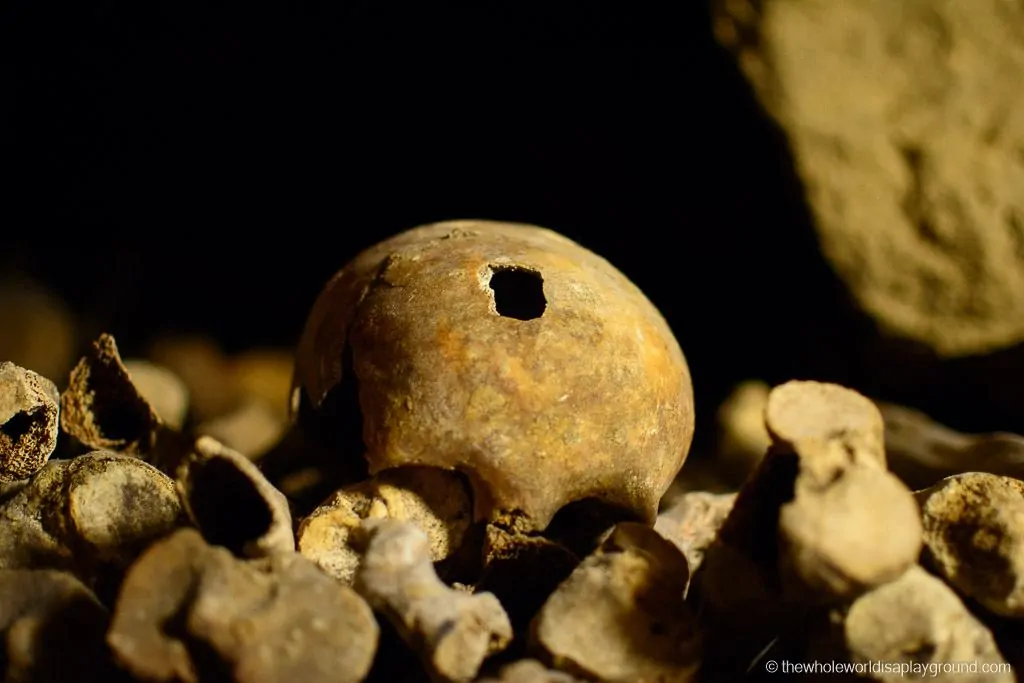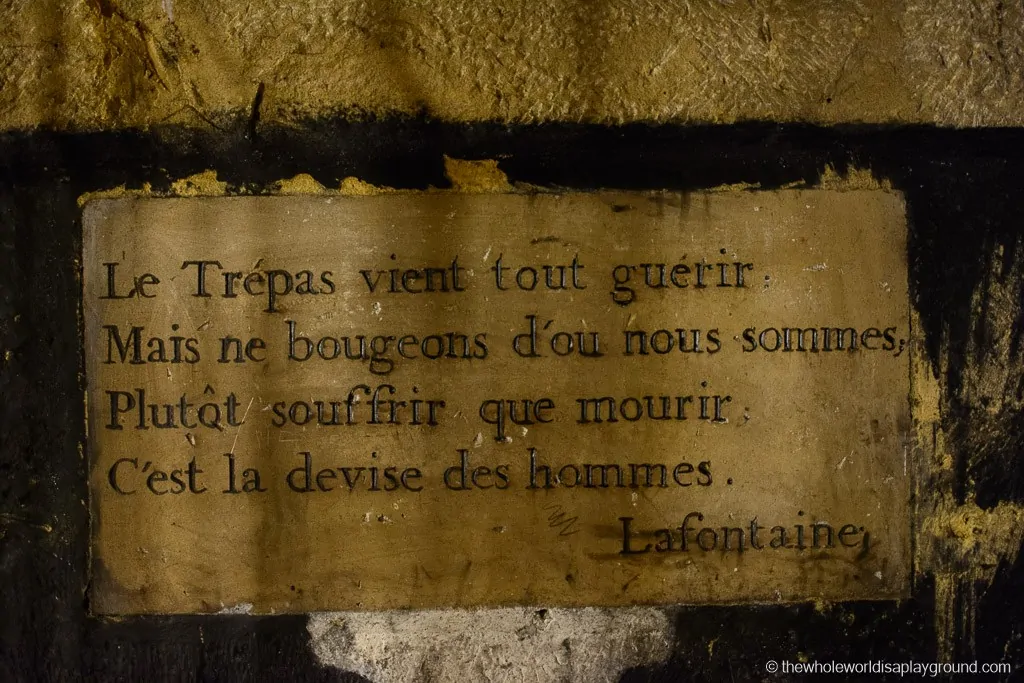After our impromptu trip to the Père Lachaise Cemetery Dave’s next Paris must see suggestion came as no surprise. We were off to visit the Catacombs of Paris, the final resting place of the remains of over 6 million Parisians. It’s hard to believe that, hidden deep below the Paris streets, there are almost 200 miles of ancient mine shafts and underground tunnels lined with human skeletons representing over 2,000 years of Parisian history.
Visiting the Catacombs
The scale of the Paris catacombs is difficult to comprehend from above the city streets. The labyrinth of tunnels stretch over 200 miles and are the final resting place of over 6 million Parisians. We visited the Catacombs early on a bleak winter morning in December and, despite arriving well ahead of the 8.30am official opening time, a long queue greeted us in the rain.
Tip for visiting the Catacombs: Arrive early! After joining the queue at 9am we didn’t actually enter the stairway to the Catabombs until almost 10:30 am. The main reason for the long wait times is due to the 200 person restriction within the tour area. A generous helping of croissants from the nearby organic boulangerie corner definitely helped to ease the pain of waiting in the cold and rain! If you are planning to get an audio guide or are just averse to queuing, tickets are now available to purchase online. Standard entry is €12 at the entrance to the Catacombs or tickets can be purchased online in advance for €27 including an audio guide.
A really brief history of the Paris Catacombs!
So what exactly are the catacombs of Paris and how did they come to be? The story goes that during the late 18th century the Parisian cemeteries reached capacity and were unable to handle any more burials. After much deliberation the authorities and the Church agreed to relocate the human remains to the old limestone mine shafts underneath Paris and the Catacombs were born.
Today a small section of the Catacombs is open to the public with the remaining parts being illegal to visit since 1955. Despite this, a maze of tunnels are still explored illegally by locals known as Cataphiles. Our visit took us through a number of skeleton filled rooms where the remains are arranged in various structures throughout each room. While it may sound morbid it’s actually a pretty surreal experience!
Entering the Catacombs
The damp and cool air of the narrow passageways rose up the stairway to meet us as we descended the hundred steps of the narrow, circular stairway and dropped deep into the network of subterranean Paris. Although there are over 200 miles of tunnels the tour is restricted to a 2 km stretch of the tunnels.
Tip for visiting the Catacombs: the Catacombs are underground and the tunnels are narrow meaning it might not be suitable for anyone claustrophobic.
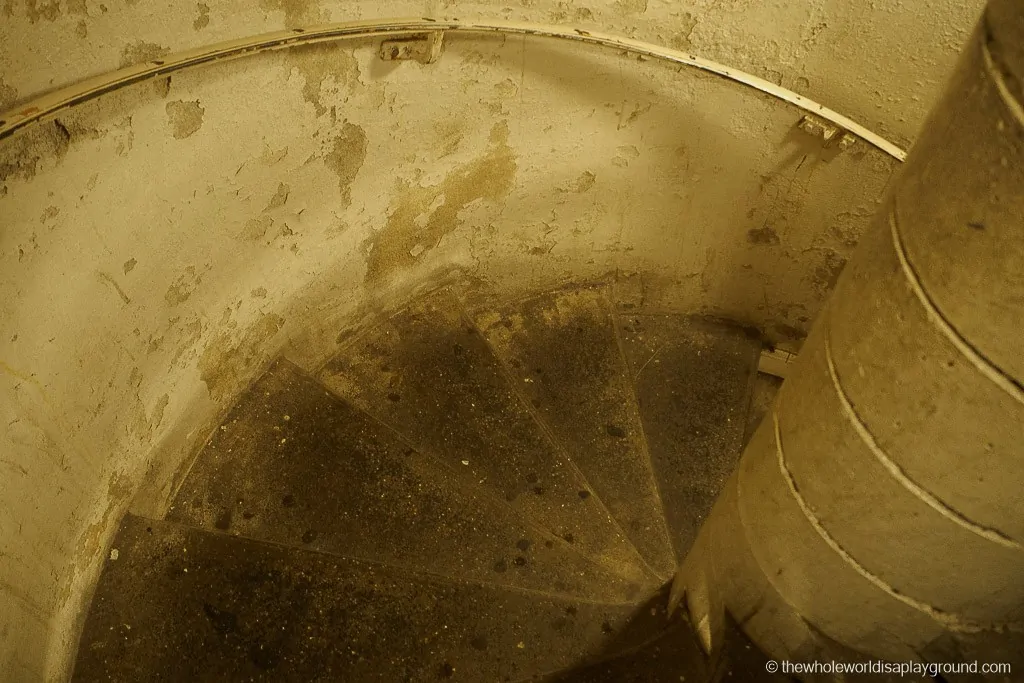
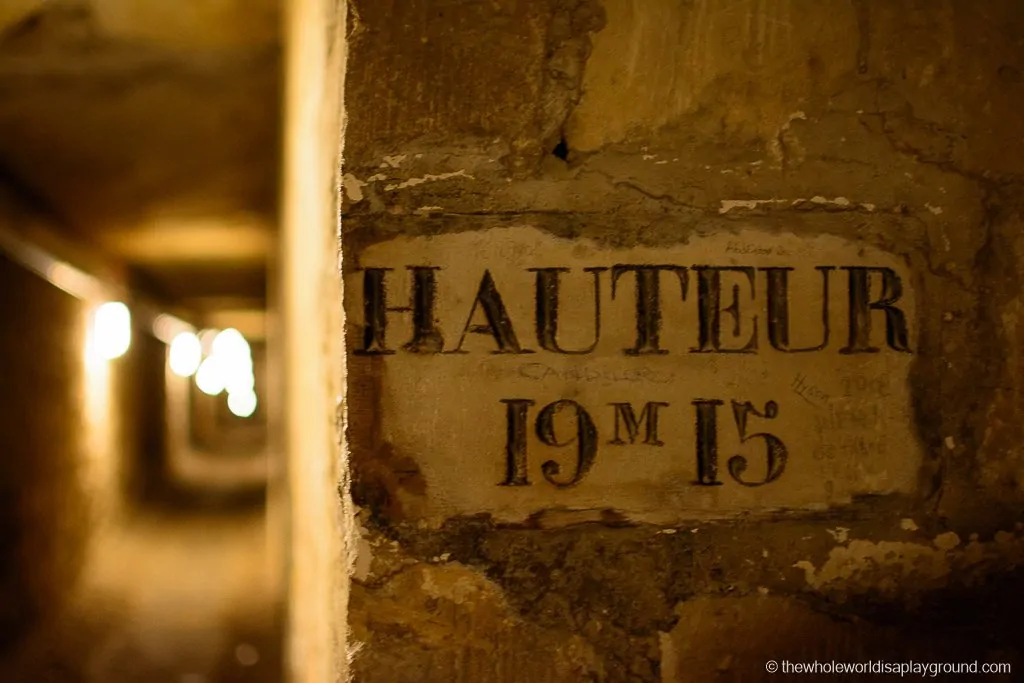
Before entering the actual chambers of the Catacombs visitors pass through rooms dedicated to the origins of the Catacombs and its original limestone mine. The mines supplied the huge quantities of stone required to build Notre-Dame Cathedral, the Louvre and the city ramparts before the space eventually served as an ossuary.
The Catacombs are eerily quiet and the low lighting adds to the dark atmosphere. Some visitors threw coins into a well which was once used as a source of water for the quarrymen who worked there:
The entrance to the ossuary bears a haunting inscription: ‘Stop! This is the Empire of the Dead’:
The Catacombs tour passes through a number of rooms and larger passageways each lined with countless skeletal remains arranged in various artistic ways:
A heart pattern:
Each of the rooms contained the locations of the cemeteries and the dates at which the bodies were removed and relocated to the Catacombs:
The journey through the narrow tombs from one chamber to the next meant we were extremely close to the remains and it felt like we were staring death directly in the face. It’s important to remember that each skeleton has a history and there are thousands and thousands on display.
The realisation that we were actually walking among the remains of thousands of late Parisians didn’t strike us immediately as the bones are arranged in such intricate patterns. It was disappointing to see that many visitors had ignored the many requests and warnings to not tamper with the bones, as many were quite obviously recently damaged and graffiti was visible on the walls.
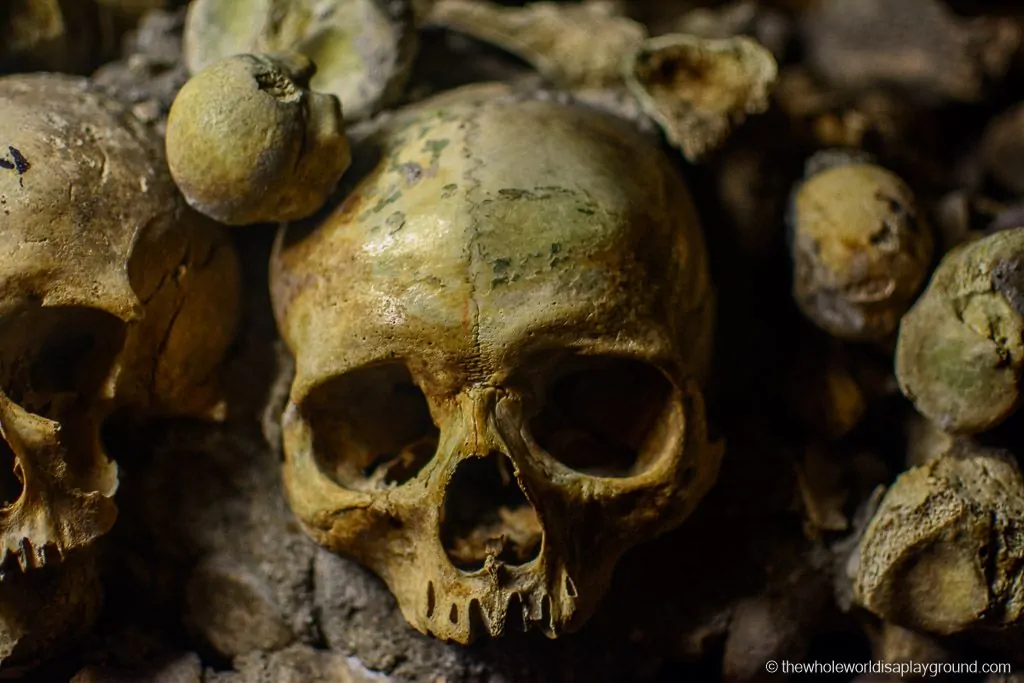
Is it worth visiting the Catacombs?
In a word, yes, although anyone uncomfortable with small spaces or the prospect of being up close and personal with lots of skeletons may find it difficult to visit. It is an amazing, albeit extremely morbid, sight that definitely has to be experienced when visiting Paris. We felt the long queue was worth it to see such an important and lesser known part of Parisian history. That said, by the time we reached the final room and ascended the stairway we were certain that we didn’t want to see a skeleton for a long time.
We’ll leave you with one of the more haunting inscriptions, a quote from the famous French poet Jean de La Fontaine, which was inscribed in stone near the exit of the Catacombs:
Death comes, a cure for every cry
Yet we recoil and doubt his skill,
And trembling hold our motto still,
Rather to suffer than to die.
Visiting the Catacombs
Location: The entrance for tours to the Paris Catacombs is located just across the street from the Denfert Rochereau Metro station. Note that the exit is located a few streets away, at 36 Rue Remy Dumoncel, which is between the Alesia and the Mouton Duvernet Metro stations.
Opening hours and queues: The catacombs are open from 10am to 8.30pm from Tuesday to Sunday. Waiting times vary but generally it’s a minimum 90 minute queue during the high season of May to September regardless of the time of day. Afternoons in the off-season may have shorter queues.
Tickets: tickets are available at the entrance and, although more expensive, can also be purchased online in advance of a visit.
Length of visit: our visit took around 45 minutes from entry to exit. Visitors must descend a 130 step spiral staircase and climb 83 steps back to the street so you should be comfortable with this before you visit.
Rules: Visitors numbers are restricted to 200 at any one time. Visitors are asked not to touch or damage any of the relics and bags are searched on exiting the Catacombs.
